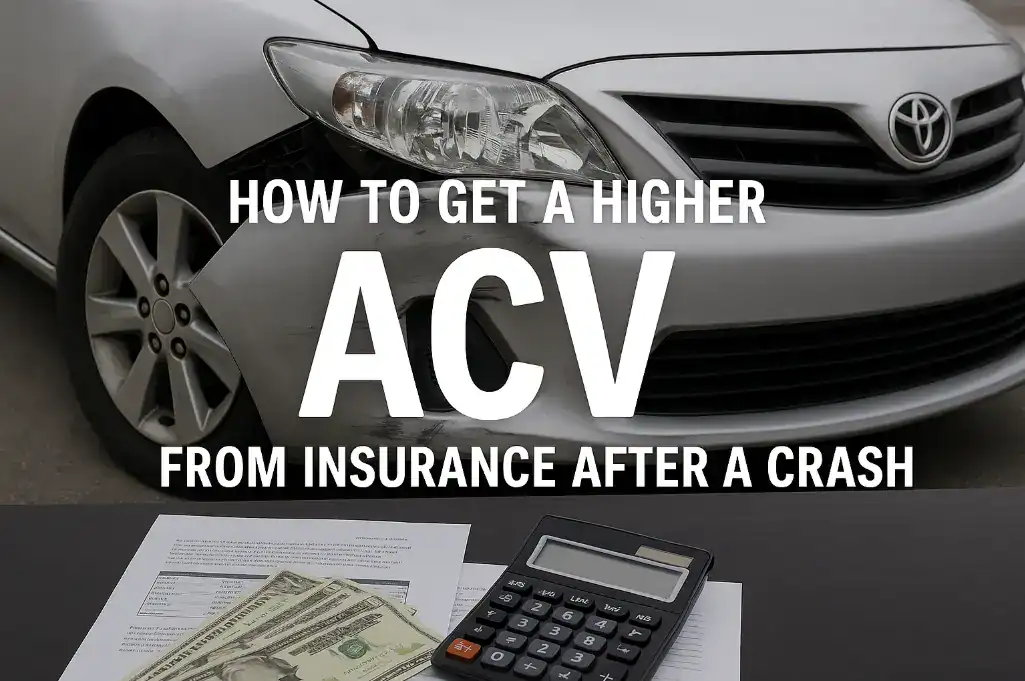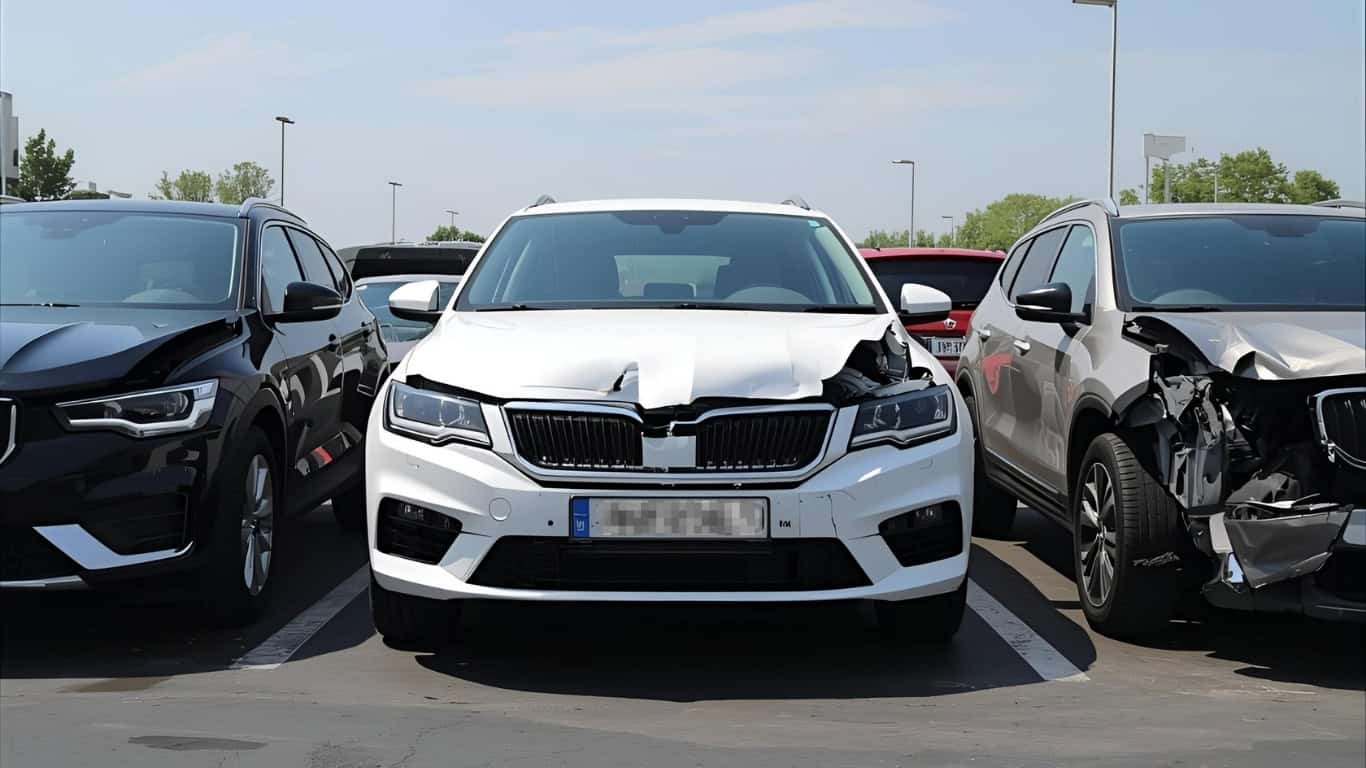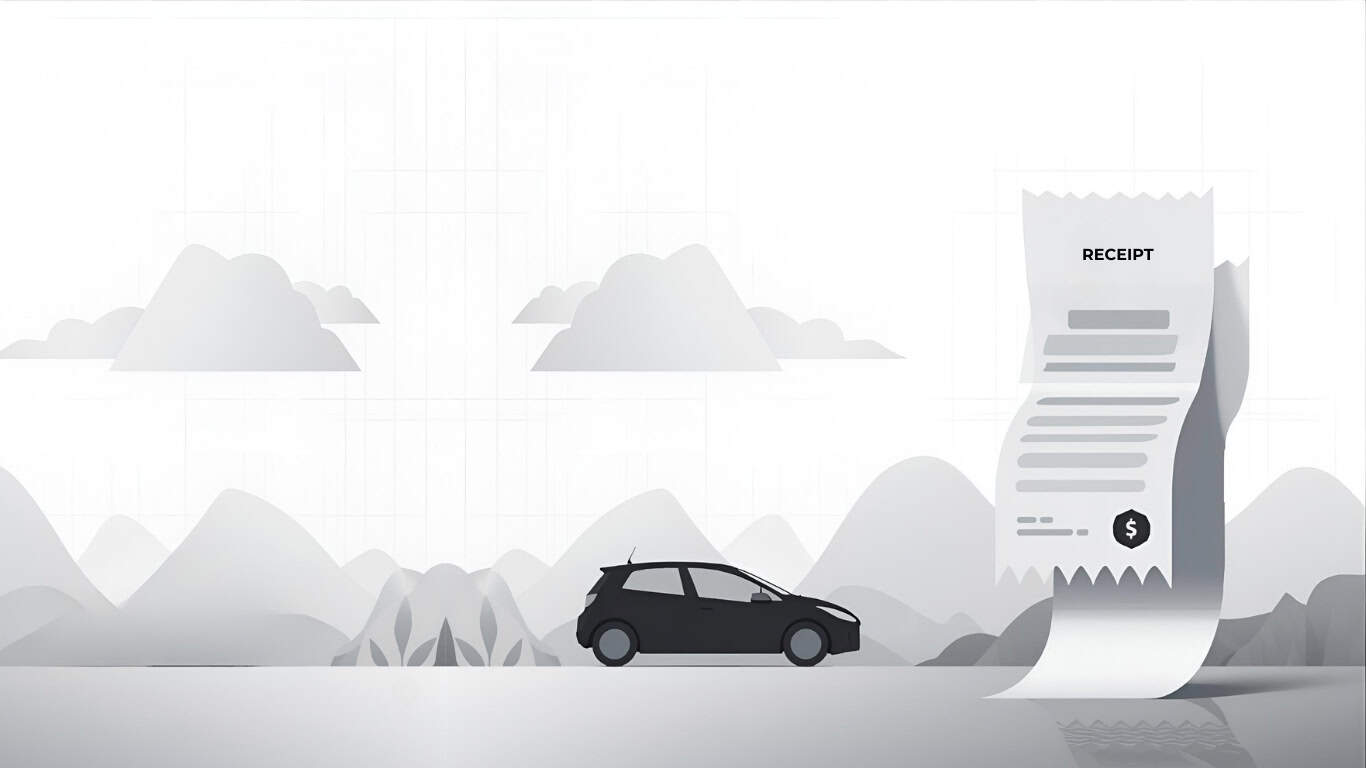When your car is totaled after a crash, the insurance company will offer a payout based on its Actual Cash Value (ACV)—but that offer isn’t always fair. Many drivers accept less than their vehicle is worth simply because they don’t know how to push back.
In this article, you’ll learn how to get a higher ACV from insurance by using local market data and comparable listings to challenge a low valuation. We’ll show you what ACV really means, how insurers calculate it, where to find solid market evidence, and how to present it effectively to negotiate a better settlement.
What Insurance Companies Mean by “Actual Cash Value”
Actual Cash Value (ACV) is what your car would’ve sold for on the open market right before the accident. It’s not what you paid for it, and it’s not what it would cost to replace it. Insurance companies determine ACV based on factors like:
- Age and mileage
- Vehicle condition
- Trim level and features
- Prior damage
- Regional market demand
The problem? Their valuation models often undervalue your car, especially if it’s well-maintained or if local market prices are trending high.
Why You Must Use Market Data to Push Back
Insurers rely on proprietary software and databases (like CCC One or Mitchell) that don’t always reflect what similar cars are actually selling for in your area.
If your car’s local market value is higher than what the insurance company offers, you have the right to dispute the number. The key is showing proof—and nothing is more effective than current, local comps.
Where to Find the Right Comps for Your Vehicle
To successfully argue for a higher ACV, you need 3–6 comparable vehicle listings from reputable sources. These comps must:
- Be from within 50–100 miles
- Match your car’s year, make, model, and trim
- Reflect similar mileage and condition
- Come from trusted sources (dealerships, major listing sites)
Recommended Sources:
- Autotrader
- Cars.com
- CarGurus
- TrueCar
- Local dealership websites
How to Use a Spreadsheet to Prove Market Value
When you’ve found your comps, put them into a clean, easy-to-read spreadsheet to strengthen your case. Here’s an example you can copy and adapt:
| Listing Source | Make/Model/Trim | Mileage | Condition | Location | Listed Price |
|---|---|---|---|---|---|
| Autotrader | 2019 Honda CR-V EX | 34,000 | Very Good | Atlanta, GA | $18,950 |
| Cars.com | 2019 Honda CR-V EX | 36,000 | Good | Atlanta, GA | $19,200 |
| CarGurus | 2019 Honda CR-V EX | 32,000 | Excellent | Marietta, GA | $19,500 |
| Local Dealer | 2019 Honda CR-V EX | 35,000 | Very Good | Decatur, GA | $19,000 |
How to Present a Case for a Higher ACV From Insurance
Here’s how to build a strong rebuttal:
- Cover Letter: Briefly explain that you believe the valuation is too low based on current market data.
- Spreadsheet: Include your comps in the format above.
- Comparison Notes: Point out key details—trim, mileage, condition—that make your car equivalent or better than their reference.
- Rebuttal Example:
“Based on the attached local vehicle listings, my 2019 Honda CR-V EX has a higher market value than the $16,250 offered. I respectfully request a reassessment of the ACV using these comps.”
When to Bring in a Certified Appraiser

If your insurer refuses to budge, check whether your policy has an appraisal clause. This lets you hire a licensed independent appraiser to give a second opinion. The insurer hires their own, and if they don’t agree, an independent umpire makes the final decision.
This route is best for higher-value vehicles or disputes over several thousand dollars.
Mistakes That Could Hurt Your ACV Dispute
Avoid these common errors:
- Submitting listings from outside your region
- Ignoring trim/package/mileage differences
- Using emotion instead of evidence
- Waiting too long to respond to the initial offer
Keep your approach data-driven and timely.
Examples of Drivers Who Got a Higher ACV After a Crash
Case 1: 2020 Toyota Tacoma, Nashville, TN
Original ACV: $24,300
Final Payout After Dispute: $27,100
Tactic: Submitted 5 local dealer comps and an appraiser letter.
Case 2: 2018 BMW X3, Miami, FL
Original ACV: $18,900
Final Payout After Dispute: $21,400
Tactic: Used dealer listings plus independent valuation.
Final Tips on How to Get a Higher ACV From Insurance
- Act fast. You often have just days to respond.
- Be organized. Submit comps in a clear table with a short cover letter.
- Stay professional. Stick to facts—don’t get emotional.
- Know your policy. If you have an appraisal clause, use it.
Conclusion: How to Get a Higher ACV From Insurance

Getting a fair payout after a total loss isn’t about arguing—it’s about proving value. If you want to know how to get a higher ACV from insurance, the answer is evidence. Solid comps, documented listings, and a clean presentation will make a far stronger case than emotion or complaints.
Use the tools above, gather your listings, and challenge the insurer’s number with confidence. Learning how to get a higher ACV from insurance isn’t complicated—it just requires that you know what your car is truly worth and that you’re willing to back it up with facts.





